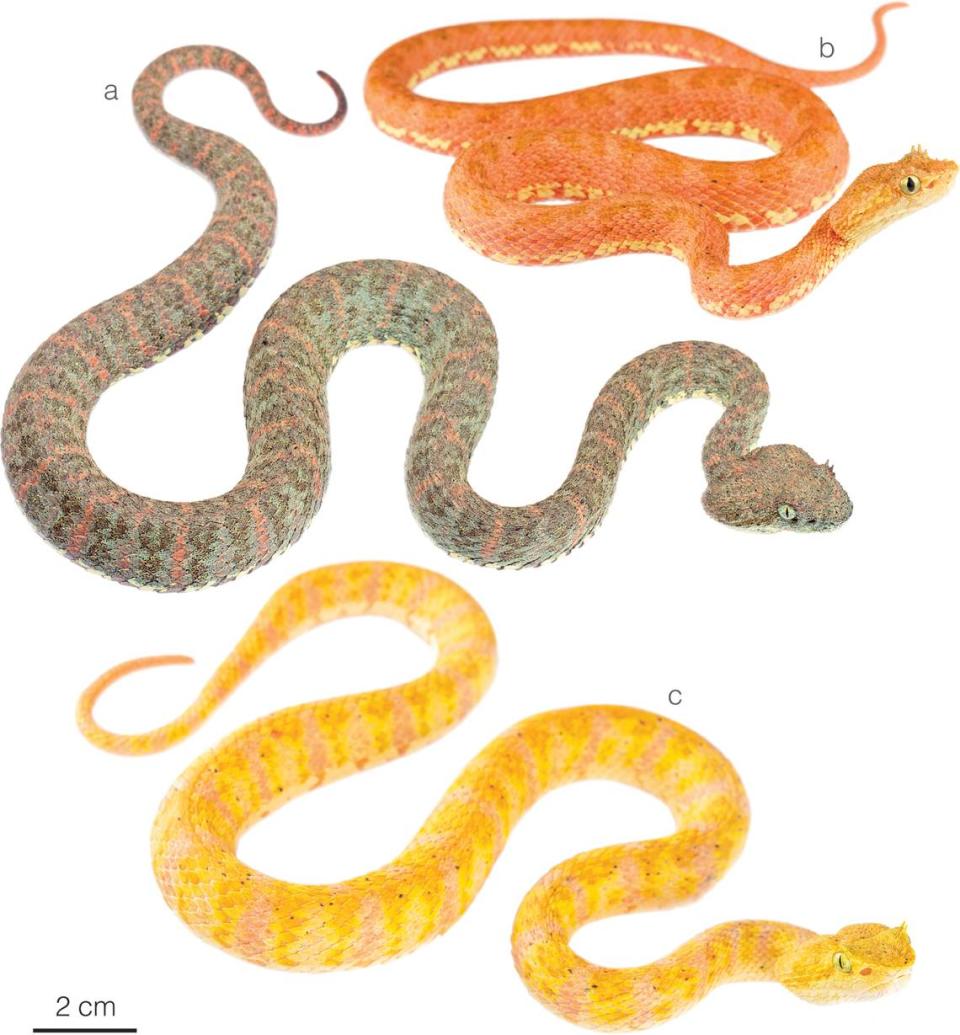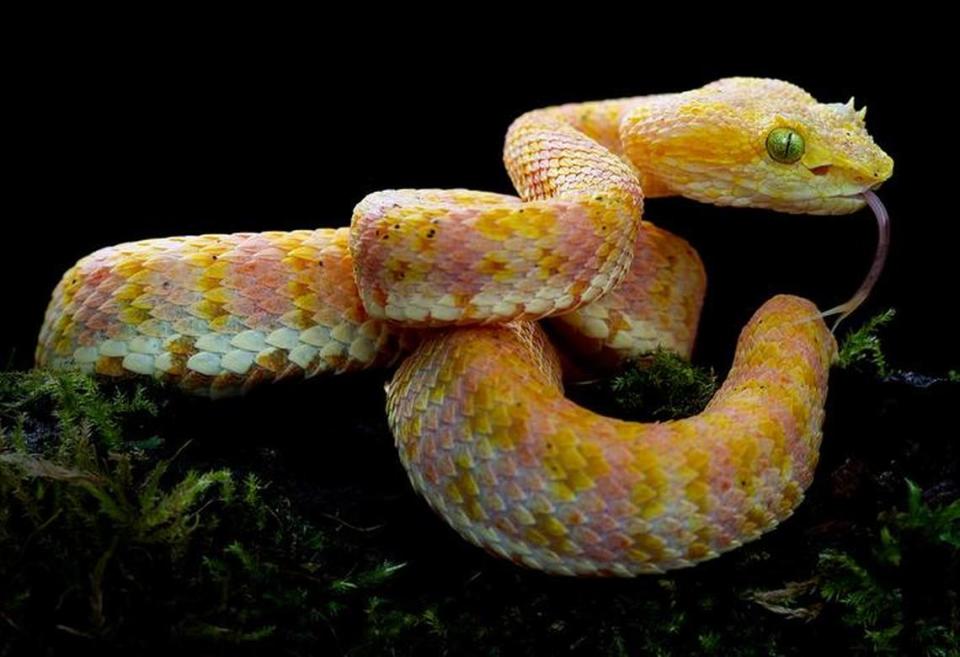Venomous 1-foot-long creature found hunting in forest of Ecuador. It’s a new species
In a forest of Ecuador, a roughly 1-foot-long creature with spiky “eyelashes” perched on a plant and waited. The venomous animal was hunting, but what came along next was not a meal.
Scientists encountered the patient predator and captured it. It turned out to be a new species.
Researchers wanted to study a group of snakes known as eyelash pit vipers, according to a study published Feb. 8 in the peer-reviewed journal Evolutionary Systematics. These snakes have scales above their eyes that resemble “eyelashes” but vary greatly in coloring and habitat.
Because of this variation, researchers suspected that some species of pit viper were being misidentified, the study said. They analyzed over 400 specimens from museum collections and started noticing a pattern.
Some of the pit vipers from Ecuadorand Colombia had pink bands and spiky “eyelashes.” Researchers quickly realized they’d discovered a new species: Bothriechis rahimi, or Rahim’s eyelash pit viper.
Rahim’s eyelash pit viper can reach up to 19 inches in length, the study said. They have “raised,” “spinelike” scales above “pale straw yellow” eyes. Their tails are “prehensile” and capable of grasping.
Photos show the variation in coloring among Rahim’s eyelash pit vipers. One snake is a carrot color, another lemon yellow and a third is a mixture of seafoam green and dull brown. All three have orange tail tips and faint pink bands down their backs.

Discover more new species
Thousands of new species are found each year. Here are three of our most eye-catching stories from the past week.
→ 'Large' metallic creature — thought extinct for 100 years — rediscovered on island
→ Spiky 'blue-headed' creature found sleeping in forest of Peru
→Pregnant creature — with gold eyes — found on Australia island
Rahim’s eyelash pit vipers are tree-dwellers living in coastal forests, the study said. Researchers have found these snakes hunting, eating frogs and “perched on stems, branches, and tangled vegetation.”
The new species is venomous, but only one snakebite has been attributed to it, the study said. A Rahim’s eyelash pit viper bit a photographer’s index finger in 2013.
“I experienced intermittent local pain, dizziness and swelling, but recovered shortly after receiving three doses of antivenom in less than two hours after the bite, with no scar left behind,” the photographer and study co-author Lucas Bustamante said in a Feb. 12 news release from Pensoft Publishers.

Researchers said they named the new species after Prince Rahim Aga Khan, a “firm environmentalist … focused on tackling climate change.”
So far, Rahim’s eyelash pit vipers have been found in 12 sites in “extreme northwestern Ecuador and southwestern Colombia,” the study said. One of these locations is the Tundaloma Lodge in Ecuador.
The new species was identified by its “eyelashes,” coloring and scale pattern, the study said. DNA analysis found the new species had between 2.5% and about 12% genetic divergence from other eyelash pit vipers.
The research team included Alejandro Arteaga, R. Alexander Pyron, Abel Batista, Jose Vieira, Elson Meneses Pelayo, Eric Smith, César Barrio Amorós, Claudia Koch, Stefanie Agne, Jorge Valencia, Lucas Bustamante and Kyle Harris.
The team also discovered four more new species of pit viper: Khwarg’s eyelash pit viper, Klebba’s eyelash pit viper, Shah’s eyelash pit viper and Hussain’s eyelash pit viper.
Winged ‘fairy’ creature preserved inside amber belongs to ‘enigmatic’ new species
Forest creature — with ‘bluish green’ bones and red-streaked eyes — is a new species
‘Alien-faced’ creature — with ‘about 200 legs’ — discovered as new species in Tanzania

